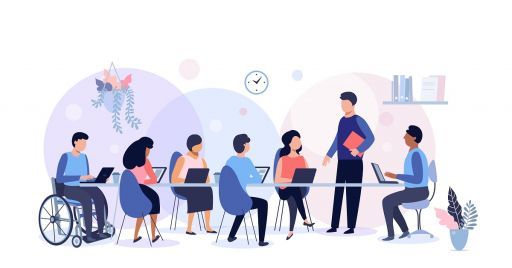
Inclusive eLearning goal
Is your eLearning product accessible to everyone? By now, it is essential to design courses that represent learners and are easily accessible to all.
We hear more and more about inclusivity in all areas. The push to include people who have been unfairly and historically excluded or marginalized is, thankfully, growing stronger and stronger. This is also happening in e-learning, where there is an increasingly clear tendency to eliminate the obstacles that do not allow everyone to effectively take advantage of training content.
What does it mean to make a virtual course "inclusive"? It means paying attention to two main elements: representation and accessibility. By representation we mean the need for students to be able to identify with the course content in a positive way, for example through the use of inclusive language. This improves learning as learners are able to interact with the information they find in the lessons.
Accessibility, on the other hand, allows learners to easily access and use the platform. If a course has no "barriers," in fact, students are more focused on learning than understanding how the course works.
Here are some tips on how to make your online course more inclusive:
Representative images: among the advantages of elearning is that you can easily use images, videos, characters or animations. It is important that all learners feel represented by these elements. Therefore, it is preferable to use images or other multimedia elements that show people of different genders, nationalities, ethnicities, ages, abilities and sexual orientation.
Inclusive language: it is important to use language that takes diversity into account and avoids discrimination. One of the clearest examples of this is when it comes to gender. It is preferable to use the word "people," for example, to "men," if you are referring to both men and women. Inclusive language also pays attention, just as in the case of images, to respecting and accommodating other ethnicities, sexual orientations, disabilities, and ages.
Accessible design and platform: the platform and course must be designed with the needs of students in mind. This also means taking into account the needs of learners with disabilities, from visual to cognitive. In this case, some of the possible improvements include the use of subtitles, the inclusion of alternative text, or the choice of a readable font.
To learn more, read also " How to create an accessible online course?".
Translated with www.DeepL.com/Translator